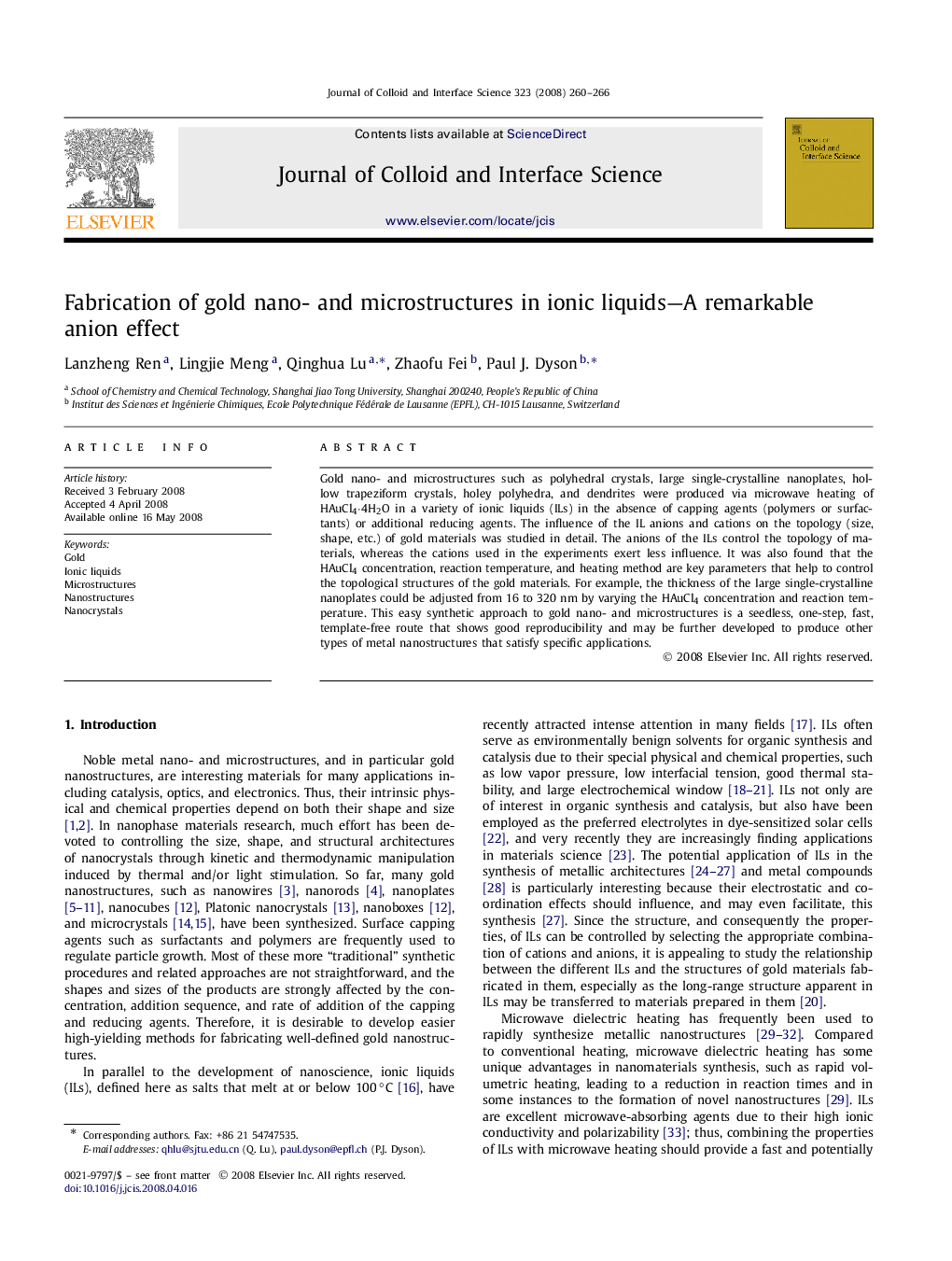| Article ID | Journal | Published Year | Pages | File Type |
|---|---|---|---|---|
| 611417 | Journal of Colloid and Interface Science | 2008 | 7 Pages |
Gold nano- and microstructures such as polyhedral crystals, large single-crystalline nanoplates, hollow trapeziform crystals, holey polyhedra, and dendrites were produced via microwave heating of HAuCl4⋅4H2O in a variety of ionic liquids (ILs) in the absence of capping agents (polymers or surfactants) or additional reducing agents. The influence of the IL anions and cations on the topology (size, shape, etc.) of gold materials was studied in detail. The anions of the ILs control the topology of materials, whereas the cations used in the experiments exert less influence. It was also found that the HAuCl4 concentration, reaction temperature, and heating method are key parameters that help to control the topological structures of the gold materials. For example, the thickness of the large single-crystalline nanoplates could be adjusted from 16 to 320 nm by varying the HAuCl4 concentration and reaction temperature. This easy synthetic approach to gold nano- and microstructures is a seedless, one-step, fast, template-free route that shows good reproducibility and may be further developed to produce other types of metal nanostructures that satisfy specific applications.
Graphical abstractBy varying the anions and cations of ionic liquids gold nano- and microstructures were produced via microwave heating of HAuCl4⋅4H2O without capping agents or additional reducing agents.Figure optionsDownload full-size imageDownload as PowerPoint slide
